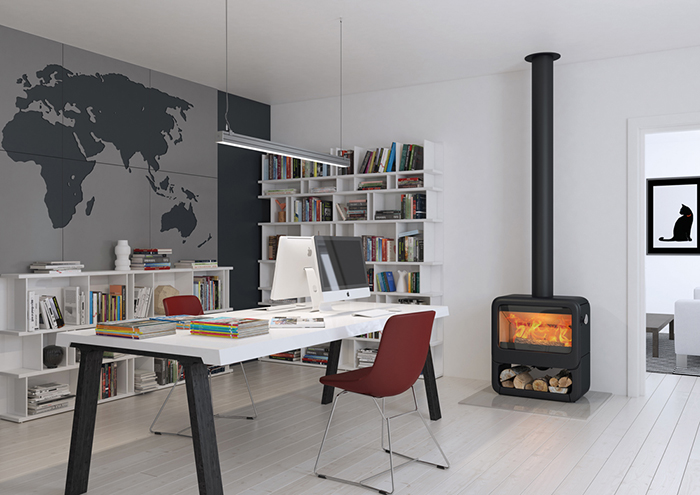When looking at wood stoves (wood burners) the idea of burning wood fuel in the home can be difficult for some people comprehend. The fact that the heat is retained within a metal (cast iron/steel) casing and the combustion chamber surrounded by fire bricks is often overlooked. The simple answer is that a wood burner is as safe as the person who operates/installs it.
Wood stoves are hot to touch
While you may have stopped feeding your wood burner hours ago, these simple looking machines are actually extremely efficient at retaining heat. As a consequence, the outer casing, not to mention the inner workings, may be extremely hot to touch many hours later. There are safety stickers you can add to your stove/flue pipe which will indicate the temperature via a visible gauge. This will give you an idea of hot they can become!
Where to locate your wood burner
A wood burner which creates so much heat can have an impact on the ground and walls in close vicinity. As a consequence, it is vital that the wood burner is placed on a surface which can take the heat. It should also be a safe distance from the surrounding walls and heat shields are often recommended for increased safety. We strongly recommend taking advice from your wood burning stove retailer with regards to the materials required to ensure safety and safety distances.
There are also other aspects to take into consideration when locating your wood burner such as air flow. Many people assume that a wood-burning stove simply burns wood and then releases the heat. In simple terms yes, but any fire requires oxygen to burn efficiently and the airflow within your room passes through the stove and assists in pushing the gases out through the flue, into the chimney and out into the atmosphere. It is also vital that you read the instructions regarding your stove. How to use the air vents when starting your fire and how to run it efficiently after the fire has caught hold.
Maintaining your wood burner
Insurance reports suggest that the vast majority of issues regarding wood-burning stoves occur in the venting system as the extremely hot gases pass through, up the chimney and into the atmosphere. If there is a blockage or restricted access this can cause major problems which could result in gases been pushed back into the room and/or fires. It is therefore vital that your chimney and flue pipe are regularly checked for blockages and the buildup of tar. The tar like substance tends to appear when there is an issue when releasing waste emissions. We have seen occasions where the substance has caught fire which can obviously be extremely dangerous.
Installing your wood-burning stove
While it is not illegal to install your own stove, flue pipe, etc the machine does need to be signed off by either a HETAS qualified engineer or the local building regulations department. A machine which has not been checked and signed off is to all intents and purposes illegal and any insurance policies may be invalid. It is highly recommended that you use HETAS qualified engineers to install your stove. They will ensure it is installed correctly, safety is maximised and the potential release of harmful gases into the room is eliminated.
As we touched on above, it is also worthwhile having your stove and flue system checked each year for blockages and potential wear and tear. These could not only impact the safety of your stove and the immediate area but also the efficiency. It is vital that you maximise efficiency when burning wood as well as retaining an extremely high degree of safety.
A stove is only as safe as the user
Wood burners are manufactured to the highest safety standards; safety is paramount as well as longevity and efficiency. However, like any machine, a wood burner is only as efficient and safe as the user. If you follow the instructions, have your stove installed correctly and maintained on a regular basis, any potential safety issues or inefficiency problems will be minimised/erased. However, if you burn the wrong type of fuel, fail to maintain the flue/chimney system and ignore general repairs as a consequence of wear and tear, you may be putting yourself and your family in danger.
While stove manufacturers tend to receive criticism in the event of accidents, gas releases and fires, a stove is only as safe as the user. Unfortunately, this is the often difficult to appreciate but it is the reality of today.

